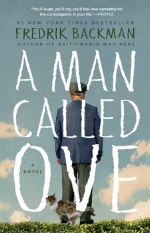Richard is retiring from his position as a classics professor in Berlin. In his university office, he packs up books, clears out drawers, sorts stacks of papers. His next steps are somewhat unclear, both to him and to us as readers. Maybe he’ll write some journal articles. Maybe he’ll kick back and take his boat out on the lake on which his suburban house is situated. Richard is a widower with no children, no close family, and an ex-mistress who is no longer part of his life; he does have a good circle of friends.
By chance, Richard walks by some refugees who are protesting the poor living conditions in a ramshackle tent village in a city park. In Germany, the refugee crisis is not abstract but obvious from makeshift camps and from daily news reports. Ever the academic, Richard wonders about the backgrounds of the refugees flooding his country. He decides to do some background reading, particularly on conflict in African nations, and he draws up a list of questions to ask individual refugees from Africa. It’s unclear what the end product of this “research” will be. Will he produce some written piece? If so, will he come down as pro-refugee or anti-refugee? Without much trouble, Richard gains access to a group of African refugees housed in an abandoned building near his home, and he starts working through his question list. (I’ll pass over the potential ethical issue of failing to seek permission for doing research on human subjects!)
Go, Went, Gone holds many layers of meaning, and as a reader you can unpeel as many of these as you want. For instance, as Richard gets more and more involved with the refugees, he’s reminded of lines in classical literature that speak to moral quandaries. He’s trying to figure out how Germans should respond to the situation, all the while Erpenbeck reminds us, by brief references to online forums, of a thriving racist element in German society.
The novel is set in the present day, but the fall of the Berlin Wall in 1989 has left residual tensions between West and East, between capitalism and communism. Richard lived for decades under an oppressive regime in East Berlin, so he’s receiving a pension that’s significantly less than that of his counterparts who worked in West Berlin. Still, in some ways he’s a beneficiary of the removal of the Wall: “Who deserves credit for the fact that even the less affluent among their circle [in the former East Berlin] now have dishwashers in their kitchens, wine bottles on their shelves, and double-glazed windows? But if this prosperity couldn’t be attributed to their own personal merit, then by the same token the refugees weren’t to blame for their reduced circumstances. Things might have turned out the other way around. For a moment, this thought opens its jaws wide, displaying its frightening teeth.” (95)
As Richard’s views on the refugees are slowly, slowly developing, small incidents take on larger meaning. Here it’s windblown dust on leaves: “The Sirocco . . . came from Africa and across the Alps, sometimes even bringing a bit of desert sand along with it. And indeed, on the leaves of the grapevines you could see the fine, ruddy dust that had made its way from Africa. Richard had run his finger across one of the leaves and observed how this small gesture produced a sudden shift in his perspective and sense of scale. Now, too, he is experiencing such a moment; he is reminded that one person’s vantage point is just as valid as another’s, and in seeing, there is no right, no wrong.” (55) Bodies of water take on a liminal quality, marking some critical transition. Richard thinks often about the lake in his backyard, which holds the body, never found, of a man who presumably drowned a couple of months before the novel begins. This sad fact reminds Richard of the thousands of refugees who’ve drowned in dangerous crossings of the Mediterranean.
Novelist Erpenbeck could easily have slid into didacticism or preachiness, but she doesn’t. She juxtaposes the quotidian activities of Richard’s life (making toast, taking his car in for service) with his increasing existential concerns about the direction of his life and the direction of the world around him. She presents the refugees mostly as benign figures, victims of civil wars or sectarian repression in their native countries, but not every refugee is honest or honorable.
Sarah Berofsky’s translation of this novel is exceptionally good, especially considering the difficulties of dealing with characters who are presented as speaking in many different languages. Richard himself speaks German, English, Russian, and Italian, in addition to his fluency in ancient Greek and Latin. He communicates with the refugees mostly in English and Italian—many of them crossed the Mediterranean and landed first in Italy. They work hard to learn the language of each country they arrive in, with the hope of remaining. The “go, went, gone” of the title refers to their language learning, since the conjugation of the German verb for “to go” (gehen, ging, gegangen) is important to eventual fluency. The title also refers to the constant “going” of the refugees, their peregrinations from one European nation to another, from one government office to another, from one squalid camp to another, in hopes of finding asylum and work.
Very few books written in other languages get translated into English. I try to report on a few of them on this blog, to reveal non-Anglophone patterns of thought. Go, Went, Gone is a brilliant and profound novel that you should not miss.
Watch for my upcoming review of Here in Berlin by Cristina García, under the heading "Moral Quandaries in Berlin, Part 2."



















